Grads ‘steak’ their claim on a slice of grocery stores’ market share
On a Tuesday morning, shortly after opening, one of the first calls to Ben’s Meats & Deli in west Edmonton is from a customer 500 kilometres away.
Now living in Lethbridge, the customer tells shop owner Dave van Leeuwen (Retail Meatcutting ‘92) she’s asked a friend coming for a visit to bring her favourite sausages. Jotting down the order, van Leeuwen tells the customer, “I’m Pieter’s son. You remember me. I’ve been here forever.”
As a neighbourhood butcher for more than 30 years – taking over from his father and grandfather before him – van Leeuwen says his family’s ability to develop and nurture relationships sets his business apart from grocery chains and discount retailers.
“I get to know my customers. You become friends with your customers,” he says. “They come back. You hear feedback. They can rely on you.”
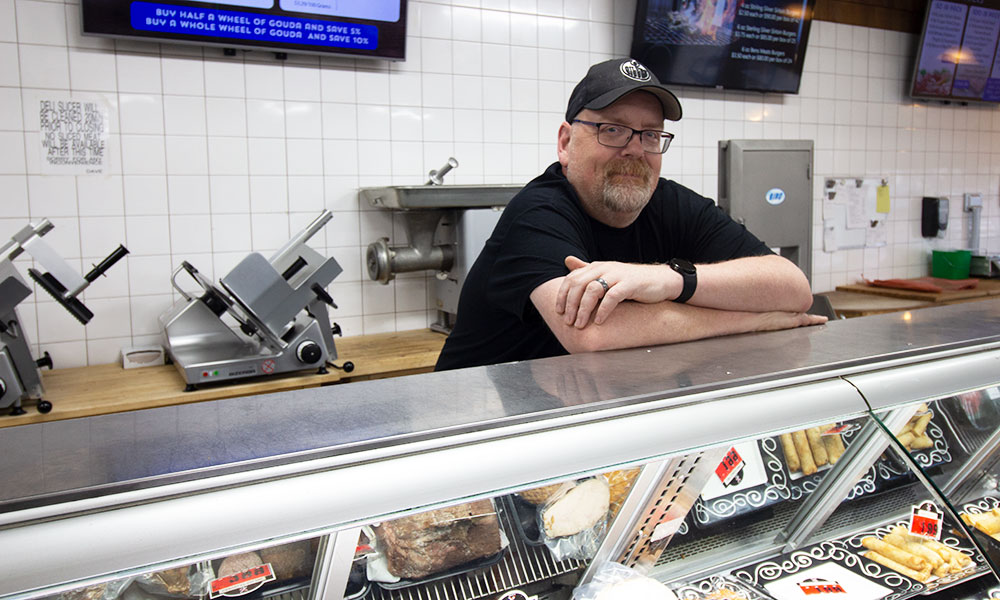
In fact, he says he still serves a customer who’s been shopping at the west side store since 1953 – when his grandfather, Ben, a Dutch immigrant, first opened the business on Stony Plain Road. Rebuilt and renovated over the years, it’s in the same spot today.
Ben’s Meats & Deli isn’t the only neighbourhood butcher shop doing brisk business these days. Despite the rising cost of meat – which one might expect to be higher at smaller retailers with less buying power – more mom-and-pop butcher shops have popped up in and around Edmonton in recent years.
It’s a trend that could be seen to run counter to current economic conditions. According to Canada’s Food Price Report 2023, consumers can expect to pay 5% to 7% more for meat this year. In fact, an average family of four can expect to spend an extra $1,065 on groceries overall, the report says – and that bill won’t be shrinking any time soon.
Nevertheless, growing public enthusiasm for the local butcher suggests that they’re finding ways to convince shoppers that they’re a cut above, making a few extra dollars between “friends” well spent.
Other ways to look at value
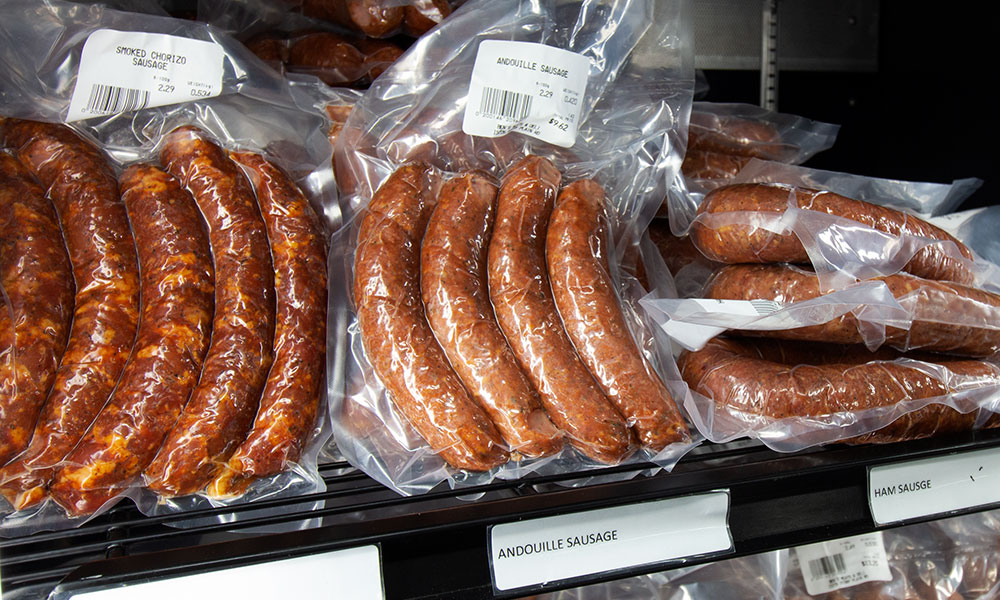
For those looking to rein in costs, grocery stores aren’t always cheaper when it comes to buying meat, says Edmonton food blogger Linda Hoang (Radio and Television – TV ’11).
She says bulk options, such as freezer packs containing a variety of cuts, or splitting a side of beef or pork with other families can reduce costs at the butcher shop.
“I think there is a misconception that meat from local butchers is more expensive, and there are certain cuts that would be,” Hoang says. “But I think the beauty of the local butcher is that they are knowledgeable – they can tell you [about] the cheaper cuts and how you can prepare them.”
Hoang says consumers are also turning to butcher shops because of environmental and social concerns – a natural evolution of the farm-to-fork movement that popularized farmers’ markets.
“With the local butcher, you know where that meat is coming from. You know what they put in it. You know the person who prepared it. You know the farm it’s coming from.”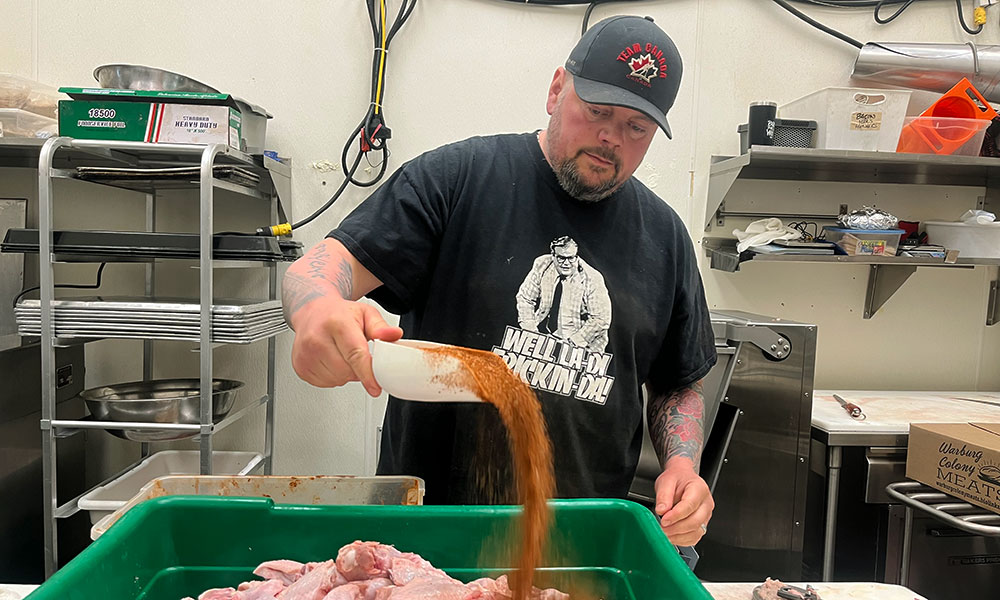
Raised in St. Paul, in east-central Alberta, Real Deal Meats owner Darcy Boisvert (Retail Meatcutting ’98) grew up knowing exactly where much of his food came from.
“My dad was a hunter and we always hunted deer. We come from a small town ... so that’s kind of what you did in the fall,” says Boisvert, who opened the south Edmonton store with his wife Alicia in 2009, after being laid off from the oil industry.
“We hunted for food. We didn’t hunt just to mount a head.”
Today, as an independent butcher, Boisvert – who cut meat at a grocery chain in the past – says his ability to quickly adapt to customers’ needs is a major difference between his shop and larger retail outlets.
“People come in here because they can get things you can’t get anywhere else."
After recognizing a need for more capacity, for example, the Boisverts recently opened a separate facility in Nisku, near the Edmonton International Airport, to process wild game for hunters and meat from small-scale farmers.
And, based on a customer’s request, he says he’s also developed new products – such as Hawaiian pepperoni and sausage – which are now bestsellers.
“We do a lot of playing around with recipes and things, and it’s fun because we get feedback from customers,” says Boisvert, who has also created recipes for other smoked products, including jerky and chicken wings.
“People come in here because they can get things you can’t get anywhere else,” he says.
Customers are also seeking specific cuts of meat, as they become more educated and adventurous with their cooking, he says. “We cut it to exactly that size, trim it up for them. It’s providing that little extra when you come in for meat,” Boisvert says, after portioning an eight-pound beef brisket at a customer’s request.
Local restaurants have also benefitted from the increasing number of independent butcher shops. Biera, a brewery and restaurant in south Edmonton, features beef and chicken from ACME Meat Market, its neighbour in the Ritchie Market.
“We do a lot of cooking over charcoal, and the meat already has really great flavour,” says executive chef Christine Sandford (Culinary Arts ’07). “So, you’re just enhancing the flavour rather than trying to cover it up.”
And Biera diners are generally willing to pay more for locally produced food, says Sandford, who also trained as a butcher under ACME owner Corey Meyer (Retail Meatcutting ’96).
“Most people who come in to dine are appreciative of that,” she says.
Rising interest in meat cutting
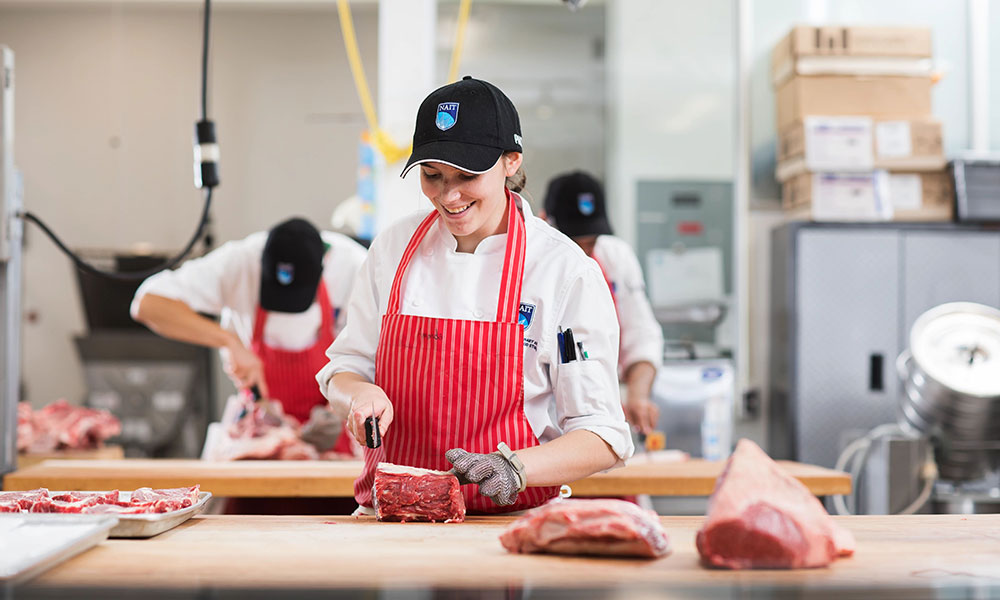
As consumers’ interest in locally sourced meats has grown, so has the demand for NAIT’s Professional Meat Cutting and Merchandising program, says instructor Chris Bradshaw (Retail Meatcutting '13, Culinary Arts '12).
In recent years, 60 to 80 people are on the waitlist for the program’s intakes, in September and January, Bradshaw says, adding there’s even a waitlist for NAIT’s Continuing Education course in meat cutting.
Bradshaw believes the spike is being driven by the proliferation of butcher shops. Students are seeing opportunities in the sector – and they’re being proven right.
After completing the 15-week program and three-week practicum, 98% of grads from the certificate program find work at grocery chains, smaller butcher shops, or processing facilities that make sausages and jerkys.
Bradshaw is convinced that number could easily be higher, but there are always a few students who choose to do something else after graduating. And some take the program to accompany a Culinary Arts diploma.
“If you can learn how to cut the meat here, or make sausages or all that, it gives you a little bit of a head start,” says Bradshaw.
The draw of the deli
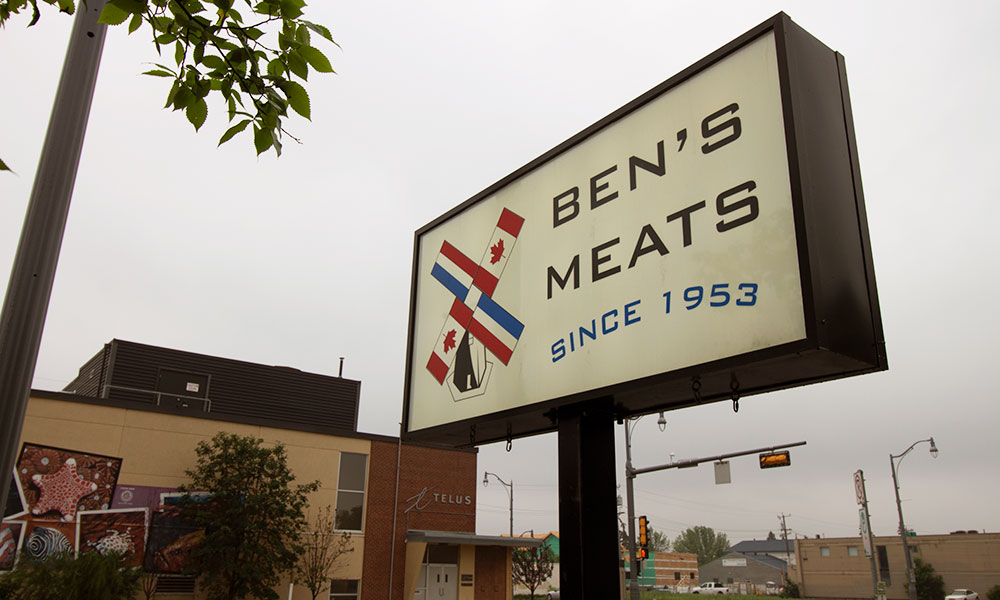
For Luella Watson, another customer at Ben’s Meats & Deli, the draw of the neighbourhood butcher shop is simple. It goes back to being able to ask for exactly what you want every time, and then get it.
Watson is careful about what she spends but says it’s worth the few extra dollars for better-tasting steaks, roasts and pork chops, all of it locally produced. The personal touch, she adds, is a bonus. “They know who you are, and what you want,” she says.
Over the years, van Leeuwen – who will celebrate the 70th anniversary of Ben’s Meats & Deli in October – says he’s maintained his philosophy of offering “higher-end product for the best price I can possibly give.”
“They know who you are, and what you want.”
To stay competitive, he’s also struck a balance between tradition and innovation. Van Leeuwen now makes a wide range of gluten-free products, for example, after identifying a void in the market when he was diagnosed with celiac disease. But he still stocks the Dutch treats his father did decades ago.
For van Leeuwen, success is a matter of building and maintaining the trust of customers who could easily spend their money on meat from the grocery-store butcher department. That’s been a key factor in the longevity of his shop in an increasingly competitive market.
“Loyalty, right?” says van Leeuwen. “You try to treat them well and you try to look after them.”